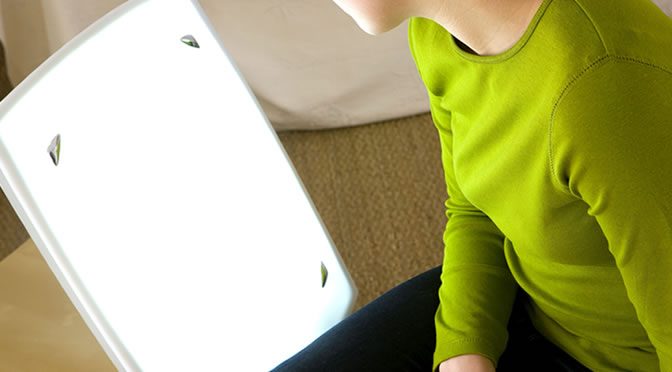Lack of interest in sex is a problem for almost one quarter of men, but a new study brings some positive news…
Many men over forty have low sexual desire, but this can be improved with light therapy, similar to that used for the treatment of SAD (seasonal affective disorder).
Scientists from the University of Siena in Italy found that bright light therapy is a successful way to increase testosterone levels, which leads to more sexual pleasure.
Sexual interest varies depending on age and many factors, such as stress, anxiety, depression and even the seasons.
The changes in sexual desire due to the seasons made scientists think that the levels of ambient light might influence this drive.
The results showed that levels of testosterone in participants was improved after regular exposure to a light box in the early mornings.
The subjects were 38 men with sexual arousal disorder or hypoactive sexual desire disorder- characterized by lack of interest in sex.
They were divided into two groups; one received 30-minute exposure to a specially adapted light box in the mornings and the other was treated with a box which produced much less light.
The subjects’ testosterone levels and their sexual satisfaction were retested after two weeks of treatment.
Those who had the active light therapy showed a significant increase in sexual satisfaction, compared with the control group.
Professor Fagiolini explained:
“We found fairly significant differences between those who received the active light treatment, and the controls.
Before treatment, both groups averaged a sexual satisfaction score of around 2 out of 10, but after treatment the group exposed to the bright light was scoring sexual satisfaction scores of around 6.3 — a more than 3-fold increase on the scale we used.
In contrast, the control group only showed an average score of around 2.7 after treatment.”
Professor Fagiolini added:
“The increased levels of testosterone explain the greater reported sexual satisfaction.
In the Northern hemisphere, the body’s Testosterone production naturally declines from November through April, and then rises steadily through the spring and summer with a peak in October.
You see the effect of this in reproductive rates, with the month of June showing the highest rate of conception.
The use of the light box really mimics what nature does.
We believe that there may be several explanations to explain the underlying mechanism.
For instance, light therapy inhibits the pineal gland in the centre of the brain and this may allow the production of more testosterone, and there are probably other hormonal effects.
We’re not yet at the stage where we can recommend this as a clinical treatment.
Even at that stage, there will be a few patients — for example those with an eye condition or anyone taking medicines which affect light sensitivity (some antidepressants, and some antibiotics, for example) — who would need to take special care.
However if this treatment can be shown to work in a larger study, then light therapy may offer a way forward.
It’s a small study, so for the moment we need to treat it with appropriate caution.”
The study was presented at the European College of Neuropsychopharmacology (ECNP) Congress (Koukouna et al., 2016).
light therapy image from Shutterstock
